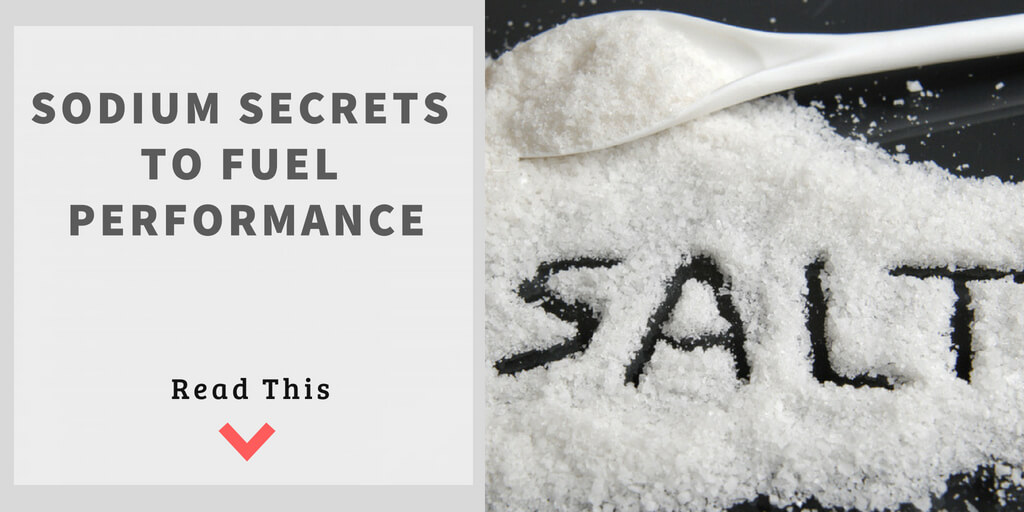How would you feel running up and down a football field in full gear in the middle of a hot and humid Florida summer?
I know. That’s probably more cardio than you need to do to shred fat and get lean. You’d burn a ton of calories.
But you’d probably feel hot, sweaty, and exhausted…right?
At least you would be after a couple hours of practice, drills, tackles, and fits of yelling from your coach.
How could you recover from a sweat-soaked workout like that and keep going?
It’s the kind of question that University of Florida researchers were thirsty to answer way back in 1965.
And the solution would literally revolutionize what we know about training, performance, endurance, and recovery.
That first batch of Gatorade included a mixture of water, sugar, potassium, phosphate, lemon juice, and one other ingredient…sodium.
Sodium to fuel performance
It’s no secret that sports drinks like Gatorade contain added sugar and empty calories.
And I don’t recommend them, especially if you’re on a calorie-controlled diet. There are zero-calorie options.
But research does support the need for sodium to fuel performance and recovery. For example:
In a study published in the Scandinavian Journal of Medicine in Science and Sports, researchers wanted to find out what impact sodium could have on performance.[1]
They gave a group of athletes sodium supplements to support hydration and replace sodium lost from sweating. These athletes competed in a Half Ironman, swimming 1.9 km, cycling 90 km, and running 21.1 km.
(OK. That’s a lot of cardio. It takes the average Half-Ironman competitor about 6 hours to go the distance. But hear me out on the impact of sodium and performance.)
Then researchers compared their results with other triathletes who didn’t have a higher sodium intake.
The results: The triathletes with adequate sodium levels to support hydration and replace sodium lost from sweat drank more fluids and finished an average of 26 minutes faster.
Want to train harder, improve performance, and recover faster? The right amount of sodium in your diet makes a difference.
“This positive effect on performance relates to an increase in the concentration of electrolytes in the blood,” says lead researcher Juan del Coso Garrigós. “[This makes] them them drink more fluids during the race, as salt stimulates thirst, and improves the water and electrolyte balances during the competition.”
How sodium helps
- Break down salt into individual elements, and it’s made of sodium and chloride.
- Your body uses sodium and chloride to support hydration, fluid balance, and blood volume.
- And that’s important when you’re working out. The right balance of sodium and other electrolytes support nerve impulses, the mind-muscle connection, and muscle contractions.[2]
- As sodium levels decline from sweat during a workout, you’re more likely to experience muscle cramps, fatigue, headaches, and a decrease in performance.[3]
How much sodium do you need?
If you’re overweight, obese, live a sedentary life, or have a heart condition, limiting the amount of sodium in your diet is important. Too much sodium can raise your blood pressure and damage your heart.
If you’re in this group, the American Heart Association recommends limiting sodium to about 2,300 mg per day.
But if you’re healthy, training hard, and work up a sweat when you’re training, your sodium needs are going to be higher.
“Athletes who sweat heavily lose more sodium than light sweaters,” says sports nutritionist Nancy Clark. “The amount of sodium in sweat averages about 500 mg sodium per pound of sweat.”
So if you lose two pounds of sweat during an intense one-hour lifting or cardio session, you’ll need to replace about 1,000 mg of sodium.
Train harder, crush a daily-double workout, workout in hot weather, and your need to replace sodium to support performance goes up.
Sodium in your diet
Are you getting enough sodium in your diet to support performance, hydration, and recovery?
Probably. If you’re eating anything close to the typical American diet, you’re probably consuming 3,000 mg of sodium or more per day.
FYI – a burger (about 380 mg of sodium), medium fries (about 250 mg of sodium), or slice of pizza (about 650 mg of sodium), are all high in sodium, but aren’t part of my meal plans. But you could work these in as a cheat meal.
In the meal plans I design for clients, you’re getting enough sodium in recommended seasonings and spices, and foods like:
- Bread
- Eggs
- Lean meat
- Fish
- Whey protein
- And for some clients…PopTarts
Eat. Train. Rest. Repeat. And pay attention to all the little details like getting enough sodium. That’s how you get results.
Looking for a meal plan and workout to help you get results in 8 to 12 weeks? Start here
References
1. Del Cosco, J., et al. (2015). Effects of oral salt supplementation on physical performance during a half-ironman: A randomized controlled trial. Scandinavian Journal of Medicine in Science and Sports. From: https://www.ncbi.nlm.nih.gov/pubmed/25683094
2. Sawka, M.N., et al. (2007). American College of Sports Medicine position stand. Exercise and fluid replacement. Medicine and Science in Sports and Exercise. From: https://www.ncbi.nlm.nih.gov/pubmed/17277604
3. Jung, A., et al. (2005). Influence of hydration and electrolyte supplementation on incidence and time to onset of exercise-associated muscle cramps. Journal of Athletic Training. From:https://www.ncbi.nlm.nih.gov/pmc/articles/PMC1150229/

